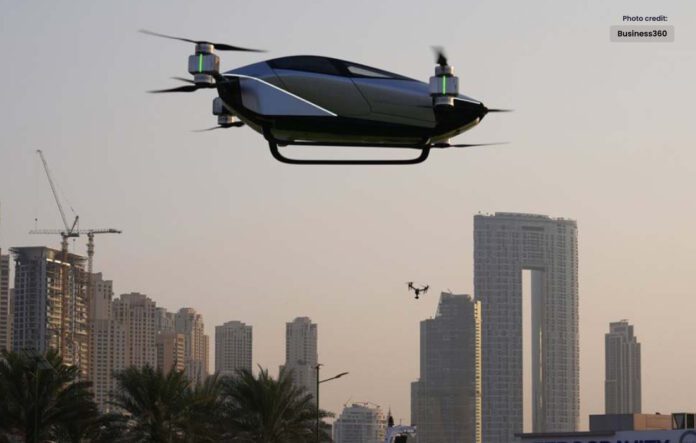UAE Vice-President Sheikh Mohammed approves new Flying Taxis stations.
He stated that Dubai would become the first city in the world to have a fully developed network of vertiports and that Flying Taxis would start operating there in three years.
An infrastructure called a vertiport is used to house electric vertical takeoff and landing (eVTOL) aircraft, including air taxis.
The air taxis would have a range of 241 kilometres and a top speed of 300 km/h. There will be a pilot and four passengers in each cab. The Dubai International Airport, Downtown Dubai, Palm Jumeirah, and Dubai Marina will be connected by the vertiport network.
To plan and build the air taxi network by 2026, Dubai’s Roads and Transport Authority. (RTA) has been collaborating with Skyports Infrastructure and Joby Aviation. The goal of the initiative is to offer guests a seamless, zero-emission ride from beginning to end.
The RTA also featured a simulation at the conference where attendees may experience flying taxis. The aircraft’s ability to take off and land vertically will result in a quick turnaround time.
Rush hour on Dubai’s Sheikh Zayed Road, a 12-lane thoroughfare, fluctuates between congested gridlock and sports-car slalom. Without include the influx of vehicles from the six other sheikhdoms of the United Arab Emirates, more than 1.8 million vehicles with Dubai registrations are on the roads.
As the UAE will host the forthcoming United Nations COP28 climate talks later this year, there is also a desire to move away from carbon-emitting gasoline and diesel automobiles. Even yet, the Emirates intends to increase its crude oil production in order to achieve the desired “carbon-neutral” future by 2050. By 2030, Dubai wants 25% of all the vehicles on its roadways to be driverless.




